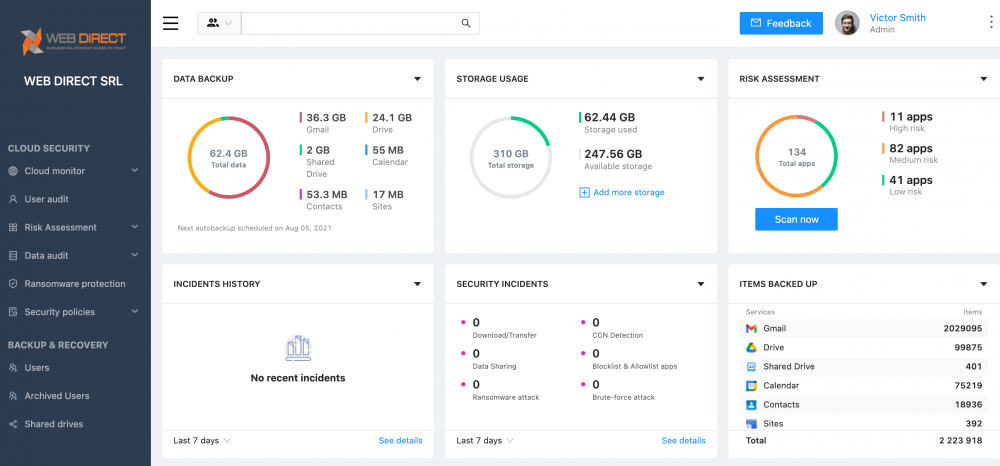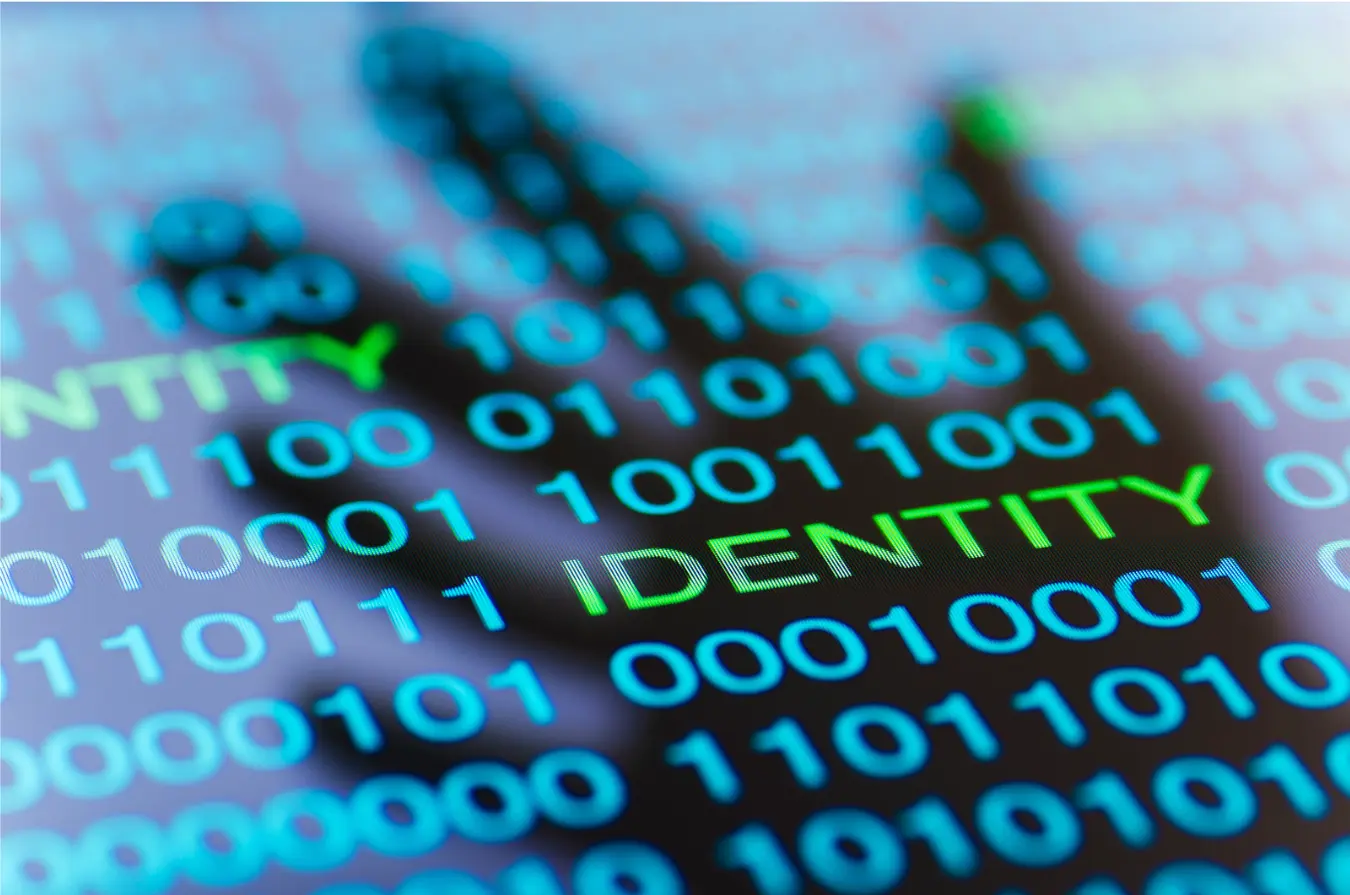SaaS Security Checklist | Best Practices to Protect SaaS Data

Modern businesses heavily rely on SaaS environments to boost their performance. While providing lots of benefits, these environments pose additional challenges to SecOps teams around the world. We created a comprehensive SaaS Security Checklist to demonstrate the best practices of data protection for companies.
SaaS Security Checklist: Data Protection, Compliance, and Threat Prevention – the Three-Fold Challenge for Business
Data is the new “gold” of businesses today. Everything is driven by collected data. Data is being stored in massive quantities and is being used for all kinds of purposes to further business interests and to make the customer experience more customized and tailored than ever before. However, never before has data been under so much scrutiny from a regulatory perspective and in danger from security concerns and threats. Businesses today must meet the three-fold challenge of data protection, compliance, and threat prevention to be successful at using data in a way that is acceptable, useful, and secure.
Don’t Rely on SaaS Vendors for Cloud Data Protection
There are often misconceptions about what responsibility the public cloud provider has towards data and what protections they offer. “Every SaaS provider explicitly calls out that clients are responsible for protecting their own data. You must plan data protection for every new SaaS service to which you subscribe. It’s not practical for you to custom-develop adaptors/connectors that protect SaaS application data. You must engage with cloud-to-cloud backup providers, as they can leverage their experience to add support for new services quickly.”
Check out Forrester Report: Back Up Your SaaS Data — Because Most SaaS Providers Don’t
Ensure SaaS Data Security to Meet Compliance Standards
Most if not all organizations doing business today fall under some type of compliance regulation(s). Just in 2018, the General Data Protection Regulation or GDPR compliance regulation was introduced. GDPR makes it much more important for businesses doing business in or handling EU citizen’s data to protect this data. GDPR has “real teeth” in terms of the penalties that can be levied against organizations found in breach of the new regulatory guidelines. This includes penalties up to 4% of annual turnover or 20 million euros, whichever is higher. This is no small penalty to be in breach of regulation!
GDPR, PCI, HIPAA, and other compliance regulations make it imperative that businesses make compliance an important part of the initial planning stages of new infrastructure including the public cloud. One of the key aspects of GDPR compliance is “security by design”. Security as part of GDPR can no longer be an “afterthought”. It must be a primary consideration when building out IT infrastructure, processes, and services today.
Despite the penalties that can be levied against businesses in breach of compliance regulations, the result is better security and a more focused approach to protecting customer data which is a good thing and a goal that all businesses today should and must strive for.
Hybrid infrastructure is making it more difficult for businesses to meet up compliance regulations as public cloud tooling, processes, and required services such as backups are often missing from the solution. This creates gaps in the ability of businesses to effectively meet compliance goals.
Employ Prevention Methods to Stop SaaS Security Threats
Every week it seems there is a notable or high-profile breach in security or ransomware attack. There is no end to attack vectors or threat actors looking to compromise data. The number of threats and those looking to steal, compromise, or destroy data is not going away any time soon. Businesses today must be vigilant about security. A huge part of security vigilance is threat protection.
Effective threat protection means organizations today go on the offensive and are proactive about security. Hybrid cloud infrastructure that spans both on-premises and public cloud environments makes it more of a challenge for organizations to have the visibility and tools needed to properly manage, maintain, and secure their environments.
Often, small to mid-sized businesses are in the sights of attackers due to fewer resources both financially and in terms of technology and personnel to ward off attacks. A recent study by healthsecurity.com found that 71% of ransomware attacks targeted small businesses for this reason. Threat protection is a key area of securing today’s technology infrastructures since it means organizations are proactively looking for threats and remediating them.
How to Meet SaaS Security Challenges: SaaS Security Checklist
Time and again, it is found that data breaches, leaks, and other security compromises such as ransomware attacks involve neglecting the basic security principles required to properly secure environments. Often, if best practice guidelines are implemented, security threats can be effectively neutralized before any real harm results.
Let’s look at a few basic best practice guidelines for SaaS SEcurity in the areas of data protection, compliance, and threat protection and see how these are important to the overall security posture of organizations today.
1. Follow the 3-2-1 backup rule
There is a key role in data protection called the 3-2-1 backup rule that serves as a best practice for protecting business-critical data. This best practice states you need to have (3) copies of your backups stored on (2) different mediums, with at least (1) stored offsite. The overall benefit of the 3-2-1 backup rule is you have multiple copies of your data and those copies are intentionally separated from one another.
This methodology is a little easier to get “hands around” on-premises since on-premises environments are controlled, provisioned, managed, and backed up in one’s own data center with chosen tools and solutions. However, with public cloud infrastructure, the 3-2-1 backup rule is often a much more difficult process for organizations to get a handle on compared to on-premises environments.
2. Store cloud data backups separately from production data
Backups of public cloud data need to be stored separately from the production environment as outlined in the 3-2-1 best practice methodology. Many public cloud SaaS backup solutions require businesses to store data in the same infrastructure that houses production data. However, businesses need a service that allows storing backup data in a separate infrastructure than production to ensure completely autonomous data backups that can be restored or downloaded without any reliance on the production SaaS infrastructure.
3. Make long-term archived backups
Keeping multiple, versioned copies of data is a core requirement of data backups. Data backups usually fall into two categories – hot backups that are used for data recovery and archived backups used for long-term data inquiries. Having the ability to store long-term backups for a designated period of time allows the ability to retain archival data.
Archived backups serve the purpose of being able to restore or review information needed for data inquiries and other historic data purposes. Organizations using a backup solution of public cloud data services need to be able to satisfy both of these backup requirements to satisfy best practice guidelines.
4. Use advanced SaaS Operations management tools to monitor data inventory
One of the most difficult things to do in public cloud environments is to monitor data inventory. While there are many tools found within the public cloud Saas environment, often, these can be cumbersome to use, have separate logins and dashboards aside from the SaaS environment and each produces information difficult to aggregate or correlate across the different tools and utilities.
To add to the complexity, public cloud SaaS environments can be vast, with thousands of users and various permission levels. Users can be coming from multiple sanctioned locations or even the public Internet when accessing business-critical data. Many businesses struggle with monitoring access to files and having the ability to effectively audit access to these resources. If this cannot be done with native tooling, businesses must use third-party solutions to be able to effectively gather and consume the data needed to keep in line with compliance best practices
5. Monitor sharing of data inside and outside SaaS environments
SaaS environments such as Microsoft 365 and Google Workspace (G Suite) allow sharing access to users who are outside the environment. This can create tremendous security and compliance challenges. Organizations must monitor access to files and data shared outside the organization to be able to effectively meet compliance regulations. Otherwise, there will always be questions about what data is shared, accessed, and potentially in violation of compliance regulations. Again, this requires effective tools to monitor and manage sharing across the SaaS landscape.
6. Leverage Artificial Intelligence to monitor SaaS data
The complexity and the sheer enormity of data housed in SaaS are simply too much for a human to manage and monitor in terms of security and compliance. Organizations looking to successfully conquer the security and compliance challenges of both today and tomorrow must use artificial intelligence. AI tools can correlate, aggregate, and parse data exponentially faster, more powerfully, and 24x7x365, unlike an actual person performing the same tasks. These types of AI-enabled tools are going to be required to stay on top of complex and challenging security and compliance obstacles in hybrid environments. Look for tools that can help you improve your Google Workspace or Office 365 DLP.
7. Encrypt data in-flight and at-rest
Encryption is a key technology in the world of security and compliance. Businesses must make data unreadable to any unauthorized individual both as it is transmitted over the network and as it is stored. This underscores the need to encrypt data inflight and at rest. Encryption of data makes it unreadable to anyone without the key to decrypt the data.
To keep with compliance and security objectives to protect business-critical and customer data, encryption is a crucial basic necessity. Clear text and unencrypted data make data leakage a very real possibility. Even if other mechanisms fail to prevent leaking data outside cloud environments, encryption helps to ensure any leaked data is unreadable.
8. Take control of identity and access management
Proving a user’s identity is one of the basic requirements of keeping an environment secure and in compliance with regulatory requirements. Even though the concept of identity is easy to understand, putting it into practice in a secure way is more difficult than might seem to be the case. Typically, establishing identity is accomplished by using some type of credentials.
The most basic way this is carried out is by using a username and password. However, organizations are finding the traditional username and password to be less than effective when it comes to securing environments and their data. Weak passwords and a lack of two-factor authentication lead to accounts easily being cracked. This leads to more modern approaches being needed to establish identity
The other component of allowing access to data resources is access management and involves linking permissions with a set of credentials. A best practice methodology with identity and access management is assigning only the absolute least amount of privileges needed to perform a specific job role. This least-privilege access methodology helps to ensure a user does not have more access than needed. Additionally, it helps to contain any security fallout of compromised user credentials. This concept of identity and access management is a fundamental requirement of securing and keeping with modern compliance regulations.
9. Ransomware protection
Ransomware is arguably one if not the top security concern of businesses today. It is an ominous threat that can wreak havoc on business-critical data and lead to millions of dollars in losses, damaged business reputation, data leakage, and other disastrous consequences. It is no longer good enough to use traditional ransomware protection.
These are reactive and only kick in long after the ransomware encryption process inflicts damage. Also, backups alone may no longer be adequate since ransomware gangs now use the threat of publishing data to the dark web when ransoms are not paid. These threats coupled with cloud SaaS API throttling that cloud service providers are enforcing means that you want to prevent large restores of data if at all possible.
Businesses must use proactive ransomware protection due to increasingly cloud-aware and more sinister ransomware threats. These solutions use effective security automation to protect business-critical cloud-SaaS environments from the need to restore large amounts of data by stopping ransomware in its tracks.
Choosing the right Saas Data Protection Solution
When it comes to data protection, compliance, and threat protection, these tasks can be extremely difficult to achieve in public cloud Software-as-a-Service environments such as Microsoft 365 and Google Workspace (G Suite). As has already been mentioned, public cloud environments are often “black boxes” with data access being difficult to monitor, control, and secure correctly.
Additionally, there are no native backup mechanisms in place with Microsoft 365 and Google Workspace (G Suite environments). This is a tremendous problem for organizations looking to migrate or already migrating business-critical services and data to public cloud SaaS environments.
As outlined in GDPR requirements, security by design must be implemented from the outset and not simply be an afterthought to modern SaaS implementations. This requires that organizations properly engineer data protection, compliance, and threat protection mechanisms to uphold the security by design methodology. Ideally, businesses need to be able to monitor, manage, and configure data protection, compliance, and threat protection mechanisms using a single pane of glass.
SpinOne – Next-Generation SaaS Data Protection, Compliance, and Threat Prevention Technology
SpinOne is a multi-tenant platform created by Spin Technology and designed to simplify the complexity of cloud data security. As an all-in-one platform, SpinOne combines three solutions that make business data bulletproof from security breaches and insider threats: SpinSecurity, SpinAudit, SaaS Ransomware Protection, and SpinBackup. SpinOne is trusted by over 1,500 organizations worldwide including HubSpot, Vopak, IBT Industrial Solutions. We have more than 1,200,000 business users in more than 100 countries.
Let’s see how the SpinOne SaaS Security Posture Management (SSPM) Platform allows businesses of all sizes, including enterprise organizations with 1000+ users, to meet current and future cybersecurity challenges head-on. The SpinOne SSPM uses artificial intelligence (AI) and machine learning (ML) to improve the overall security stance of your organization. It has been engineered with modern cloud SaaS environments in mind to help alleviate the complexities and challenges of protecting business-critical data from current cybersecurity threats.
It is making it simple for SecOps and SaaSOps teams to manage and protect SaaS data properly.
SpinOne SaaS Security Management Platform Features
- Artificial intelligence-powered cloud ransomware detection
- AI-based ransomware recognition and risk management
- Risky application scoring for third-party applications
- Domain audit
- Flawless cloud backup and restore
SpinOne’s proactive ransomware protection is arguably the best on the market against modern cloud-aware ransomware variants in the wild. It uses an intelligent, automated response mechanism, including the following:
- Monitor – 24/7 SaaS data monitoring
- Detect – Proactive AI-based crypto-behavior
- Stop – Identify the malicious source of a ransomware attack, revoke its API access, stop the attack and prevent encryption of other files or messages in the cloud
- Recover – Identify the number of encrypted files and perform a granular restore from the last successfully backed up version
In the next part of the CISO SaaS security guide, we will take a much closer look to see how SpinOne allows your organization to have a much stronger security posture. We will see how the features and capabilities SpinOne provides effectively offer the automated tools needed to meet the challenges of today’s cybersecurity landscape of both small and large organizations.
Was this helpful?
How Can You Maximize SaaS Security Benefits?
Let's get started with a live demo
Latest blog posts
What You Need to Know About AT&T’s Data Breach and How t...
Arguably, it is one of the worst breaches that has happened recently. AT&T disclosed in...
Lessons from the Twilio Breach: Securing SaaS Applications Against ...
Another recent security breach has made organizations think yet again about SaaS apps they may...
Unpacking the CrowdStrike Outage: Causes, Impacts, and Protecting Y...
A major global IT outage occurred on Friday, July 19, 2024, causing widespread disruptions across...



